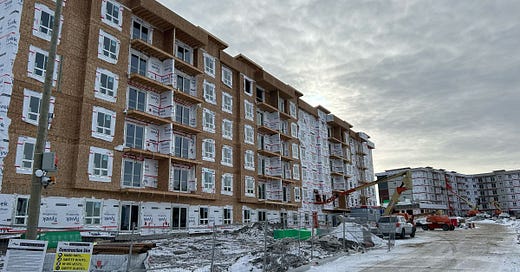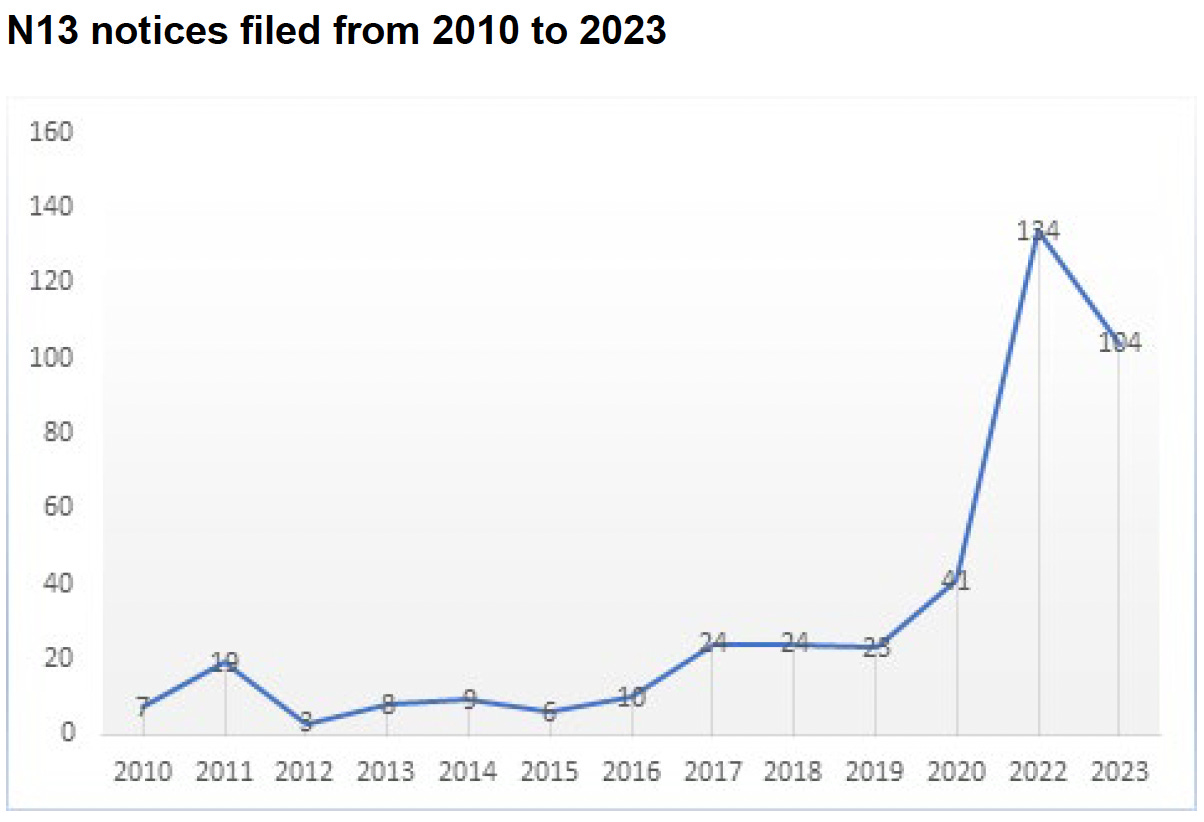A summary of N5, N12 and N13 eviction notices in Ottawa, 2010-2023
The number is going up, way up
Two reports landed in my inbox in the past few days.
One received a lot of media coverage: A study from the Association of Municipalities of Ontario that says more than 80,000 Ontarians were known to be homeless in 2024, a number that’s up 25 per cent since since 2022.
The other report was a staff response to an inquiry from Councillor Ariel Troster in Ottawa, titled Issuance of N5, N12, N13, and AGIs at the Landlord Tenant Board in Ottawa. This one hasn’t had a lot of attention and I think it’s important to share some highlights here.
The report is based on data from the Landlord Tenant Board (LTB) for the Ottawa area and covers 2010-2023. It shows a clear increase in the number of eviction notices issued over the time period, and a significant increase post-pandemic for some categories.
There was a moratorium placed on the enforcement of all residential evictions during parts of the COVID-19 pandemic, from March 19-September 14, 2020 and from April 8-June 2, 2021. There was also a province-wide went freeze from January 1 -December 31, 2021. There is a post-moratorium bump visible in the data, but I don’t think that’s the only factor in the big increase in the last couple of years.
It’s quite likely that some of the N12 and N13 notices being issued aren’t legit: that a landlord doesn’t end up using the unit for family use after issuing a N12 notice; or that the renovations either aren’t required, or aren’t significant enough for the tenant to move out to warrant a N13.
There is not much oversight on landlords when they issue N12’s and N13’s. There is anecdotal evidence that some landlords are using those notices as a loophole to evict tenants and then rent the apartments to higher-paying tenants, circumventing rent control rules. I know people who have experienced this.
Measuring the prevalence of false N12 or N13 notices is difficult, and the onus is on tenants to prove a N12 or N13 is false. That’s a huge loophole for landlords. It’s clear that policies and rules around evictions need to be strengthened, along with more resources to help tenants understand their rights.
Check out the data below.
N5 notices
The N5 is an eviction notice from a landlord to end a tenancy for interfering with others, damage or overcrowding. Here’s a graph showing the total number of N5 notices filed from 2010-2023.
N12 notices
The N12 is an eviction notice from a landlord to end tenancy because the landlord, a purchaser or a family member requires the rental unit for their own use. Here’s a graph showing the total number of N12 notices filed from 2010-2023. The number of N12’s issued in 2023 was over twice the number in 2019.
N13 notices
The N13 is an eviction notice from a landlord to end tenancy because the landlord wants to demolish the rental unit, repair it or convert it to another use. Here’s a graph showing the total number of N13 notices filed from 2010-2023. The number of N13’s issued in 2023 was over four times the number in 2019.
L5 notices
And finally, here’s a graph showing the total number of L5 notices filed from 2010-2023. L5 is an application from the landlord to increase rents by more than the annual provincial rate guideline.1
For example, the rent increase guideline for 2025 is 2.5%. It applies to most but not all rental units. New buildings occupied after November 15, 2018 are exempt from the limit. And units that have turned over with a new tenant have no cap on the increase.








